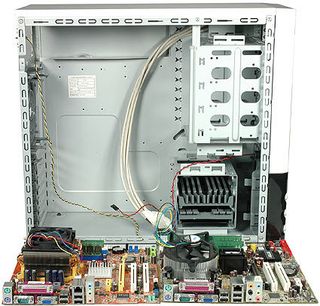The $300 PC
Conclusion

Many of the benchmark results can roughly be compared to processor performance numbers of our Interactive CPU Charts. A look at some of them will show very quickly that these two low budget PCs are no match whatsoever for any mainstream system. Depending on the type of application, mainstream and high-end processors can be several times faster. This is because low-cost processors, whether it is AMD's Sempron or Intel's Celeron, represent outdated technology. These CPUs are single-core devices, as opposed to dual and quad cores, they carry little cache memory and they operate at relatively low clock speeds (Sempron) or on an old micro architecture (Celeron). So, from a performance point of view, the two systems are not the perfect choice anyway.
However, both systems had to adhere to our $ 300 budget, which we had to extend slightly for reasons of making the systems somewhat future-proof. Both are clearly capable of handling any office and multimedia task and the level of performance provided by the budget processors still is acceptable. The hard drive is fast enough to make the system feel quick, and 1 GB of RAM is enough for applications to run smoothly. And both systems can be upgraded with dual-core processors in case you are not happy with the performance after a while.
The remaining question is: Which is the better low-cost solution, the AMD or the Intel system? Most of the benchmarks are dominated by Intel's Celeron D processor 352, which was even cheaper than the Sempron 3400+. AMD, however, also offers a reasonably priced Sempron 3600+ and single-core Athlon 64 processors, which can speed the system up, but this would add more cost. Both solutions roughly consume the same amount of energy, which is ~53-54 W in idle and ~60-62 W under load. Differences thus can be found in performance. Ironically, Intel won this shootout with a product that is based on its often criticized NetBurst architecture. Such is life.
Join our discussion on this topic
Stay on the Cutting Edge
Join the experts who read Tom's Hardware for the inside track on enthusiast PC tech news — and have for over 25 years. We'll send breaking news and in-depth reviews of CPUs, GPUs, AI, maker hardware and more straight to your inbox.
Most Popular

